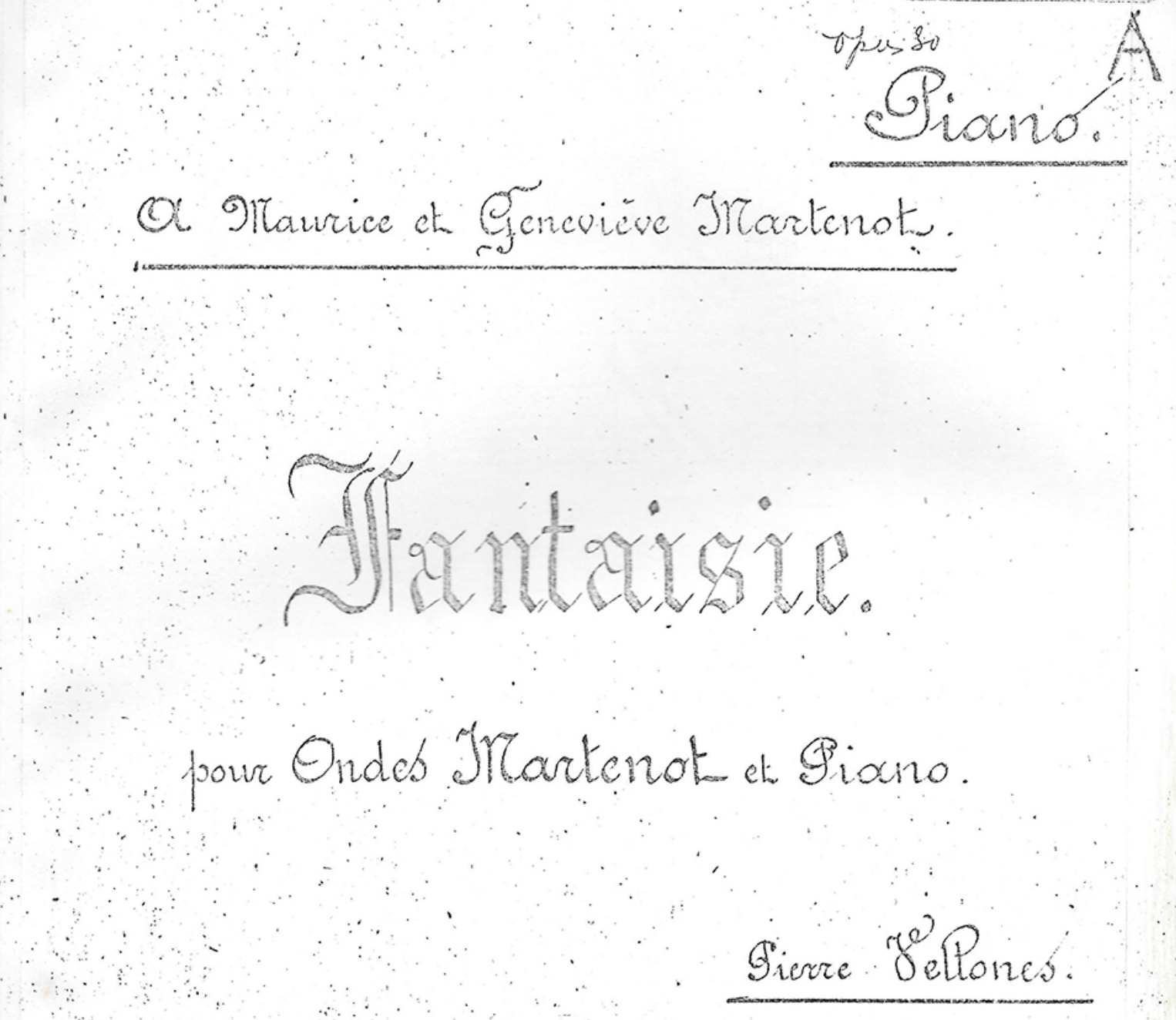Pierre Vellones: A pioneer of the waves
Pierre Vellones (1889-1939)
The early 20th century witnessed a surge in interest in electronic music, with the invention of the ondes Martenot – an early electronic musical instrument – sparking the imagination of composers worldwide. Among the early adopters of this fascinating instrument was Pierre Vellones, a French composer, artist, and medical doctor, whose passion for innovation and experimentation shaped the way for the ondes Martenot's future success. The documentary linked here provides an ideal starting point for a discussion of Vellones' life, his relationship with Maurice Martenot, and his groundbreaking work in advancing the ondes Martenot.
The Meeting of Minds: Vellones and Martenot
Pierre Vellones' encounter with Maurice Martenot, the inventor of the ondes Martenot, was serendipitous. While treating Martenot's cousin, the two discovered a shared interest in music and technology, eventually forging a lifelong friendship. Vellones, an accomplished pianist, saxophonist and enthusiast of electrotherapy and exotic percussion, was captivated by the ondes Martenot's unique sound and potential.
Vellones' Contributions to the Ondes Martenot
In 1930, Vellones composed the second original work for the ondes Martenot – the "Fantaisie" for ondes and piano – making him the first French composer to write for the instrument. In total, Vellones composed six works for the ondes Martenot, two of which were created for a Columbia record. These pieces, "Split" and "Vitamines," gained significant attention, with the record aiming to showcase the ondes Martenot's distinct sound and Columbia's advancements in sound recording.
Vellones' passion for the ondes Martenot extended beyond the realm of pure music composition. He incorporated the instrument into his work for theatre and cinema, helping to popularize its use in various musical contexts. Despite his untimely death in 1939, Vellones' work laid a strong foundation for the ondes Martenot's future success.
The 1937 Exposition and Beyond
Vellones' impact on the ondes Martenot's history was perhaps most evident during the 1937 Exposition in Paris. As an organizer of the nighttime festivities, Vellones recommended using the ondes Martenot and prerecorded music to ensure quality and synchronization. He composed "La Fête fantastique" for the event, which featured a unique orchestration of three ondes Martenot, a saxophone, and an exotic percussion ensemble.
At least half of the eighteen composers who participated in the 1937 Exposition incorporated the ondes Martenot in their works, a testament to Vellones' influence. His composition for the event, "La Fête fantastique," was guided by a "partition de couleurs" or color score, using vivid colors and sketches to indicate the water and light spectacle sequences.
Vellones' Ondes Martenot Compositions
Pierre Vellones composed six works for the ondes Martenot, each showcasing the instrument's versatility and potential. These works include:
"Fantaisie" for ondes and piano (1930 - unpublished), the second known work for ondes Martenot and the first by a French composer; performed in the above film by Jean-Philippe Dartois and Sophie Cieren.
"Split" and "Vitamines" for ondes and ensemble (1935 - ed. Salabert), composed for ondes, saxophone quartet, two flutes, contrabass and percussion battery including celesta and vibraphone; both were recorded for Columbia Records in 1935 under the title “Two Pieces for Columbia”, featuring Maurice Martenot on ondes. Both were also scored in piano conductor reductions by the composer.
"À Cadix" (score dated 28 May 1938), a pasodoble for two ondes Martenot, 3 saxophones, trumpet, contrabass, piano, harp and percussion battery. Also scored in piano conductor reduction.
"Karakoram" (1935 - unpublished), composed for seven ondes Martenot, piano, and an eastern ensemble, this piece accompanied a film about the conquest of the Himalayas.
"Fête Fantastique" (1936) – Written for three ondes Martenot and a large exotic ensemble to accompany firework and waterwork displays during the 1937 International Expo.
"Une aventure de Babar" (1936) – A charming piece available as a recording and published by Lemoine.
Conclusion
Pierre Vellones' contributions to the world of electronic music, and specifically to the ondes Martenot, cannot be overstated. As a pioneer of the instrument, he composed groundbreaking works that showcased its versatility and introduced it to new audiences through theatre, cinema, and large-scale events. His collaboration with Maurice Martenot and his dedication to innovation led to the ondes Martenot's enduring presence in music history.
Vellones' work is a testament to the power of passion, curiosity, and the willingness to embrace new ideas. Though he passed away prematurely, his legacy lives on through the music he created and the composers he inspired, ensuring that the enchanting sounds of the ondes Martenot continue to captivate audiences for generations to come.





